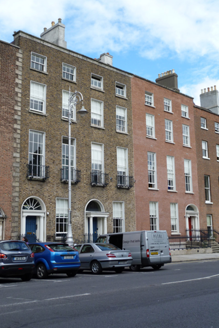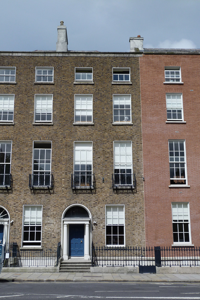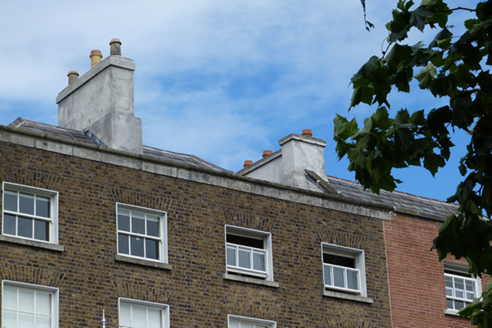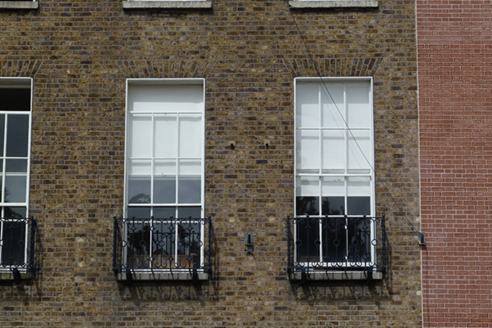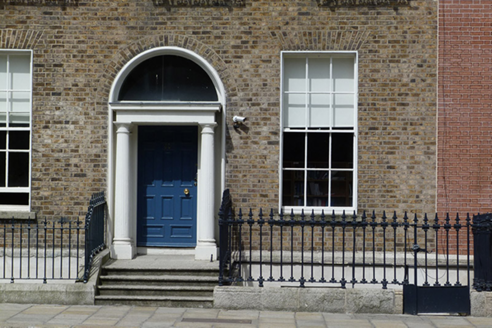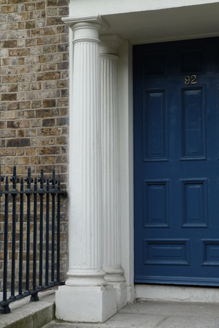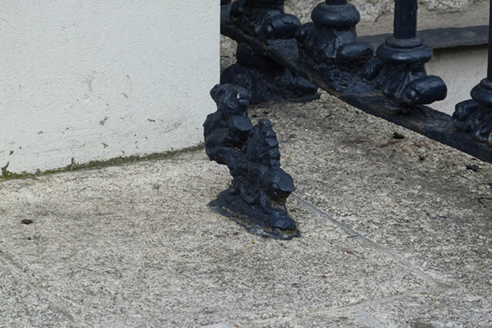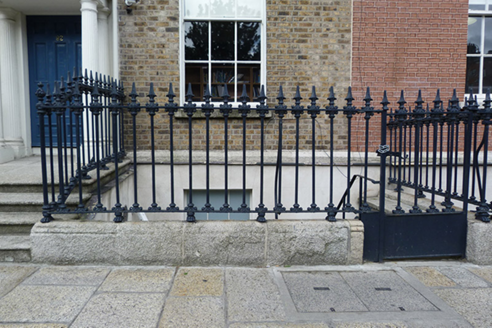Survey Data
Reg No
50100228
Rating
Regional
Categories of Special Interest
Architectural, Artistic
Original Use
House
In Use As
Shop/retail outlet
Date
1750 - 1770
Coordinates
316526, 233697
Date Recorded
04/08/2016
Date Updated
--/--/--
Description
Attached two-bay four-storey former house over basement, built c. 1760, originally as single house with No. 91, projecting from street line. Now in use as offices. Slate roof, concealed behind granite parapet, front part hipped to north end and pitched to south and parallel to street and that to rear being perpendicular to street. Rendered chimneystacks to party walls. Flemish bond brown brick walls over granite plinth course and having ruled-and-lined rendered walls to basement. Square-headed window openings, diminishing in height to upper floors, with patent reveals, painted granite sills and timber sliding sash windows, three-over-three pane to top floor and six-over-six pane elsewhere; apparently timber sash to rear, three-over-three pane to top floor and one-over-one pane below. Decorative wrought-iron balconettes to first floor. Round-headed door opening with rendered linings, plain frieze and cornice, shallow portico supported by fluted Doric columns, plain fanlight, and recent eleven-panel timber door with brass door furniture. Granite platform with cast-iron boot-scrape and four bull-nosed granite steps flanked by cast-iron spearhead railings on carved granite plinth enclosing basement area. Abutted at rear, with carparking to rear of plot.
Appraisal
No. 92 Merrion Square is an elegant Georgian house built as part of the original laying out of the square. Developed as part of the Fitzwilliam Estate, Merrion Square is one of the best-preserved Georgian streetscapes in Ireland. The north, east and south sides of the square have terraced houses of eighteenth and nineteenth-century date, while the west side is terminated by the garden front of Leinster House and the neighbouring Natural History Museum and National Gallery buildings. The houses maintain a relatively uniform building height and design, attributed to standards promoted in Fitzwilliam's leases, and are among the earliest, dating from the 1750s-60s. Originally forming part of a larger four-bay house, No. 92 was divided from adjoining No. 91 in the mid-nineteenth century. It is defined by a shallow Doric portico and large windows, likely added during the conversion. It is enhanced by the stepped entrance and the good setting details that provide an intact appearance to the street edge.
